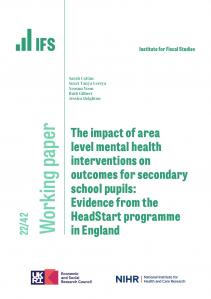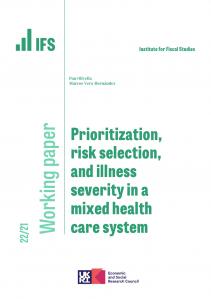Whoever has the misfortune to be Chancellor of the Exchequer after the next general election will face the painful task of repairing Britain's battered public finances. A key judgment will be how quickly to try to do the job.
The plans pencilled in by Alistair Darling in last year's Pre-Budget Report and in this year's Budget involve two parliaments of mounting pain: a combination of tax increases along with cuts in previous public spending plans that are set to begin modestly next spring and increase steadily in size over eight years.
The Treasury believes the squeeze is necessary because the financial crisis has permanently damaged the productive potential of the economy, as well as reducing the expected levels of the stock market, the housing market and prices for goods and services across the economy below those assumed in last year's Budget. This permanently reduces the tax receipts it can hope for and increases the expected level of public spending as a share of national income.
The result is that the "structural" budget deficit - the amount the Treasury thinks it would need to borrow if the economy was in normal health - is bigger by more than 6 per cent of national income, or £90 billion a year, than it was in last year's Budget. It is this hole that Mr Darling's proposed spending cuts and tax increases are designed to fill. His plans aim to shift us from a trajectory in which government debt would explode to one in which the debt will peak in four years time at just under 80 per cent of national income - which is still twice its pre-crisis level.
The £30bn one-off cost of the Government's fiscal stimulus measures (including the temporary cut in VAT) and the losses it expects to make from the nationalisation of high-street banks pale into insignificance when compared with this structural deterioration.
Two lessons follow. First, critics who say that the stimulus was unaffordable are confusing molehill and mountain. The package could have been twice as long, or twice as large, and it would have made very little difference to the outlook for government debt.
Second, the Government should not be too zealous in trying to minimise the financial loss it makes when it sells its stakes in the banks. It should certainly not be tempted to seek a higher price by creating a competitive and regulatory environment in which new owners can expect to make big future profits at the expense of consumers.
Convincing people that you will fill the structural hole does not mean that the Government should resist a big jump in public borrowing in the short term - the recession makes a surge in borrowing inevitable and indeed desirable. But investors are less likely to take fright and jack up the interest rates at which they are prepared to lend to the government and the private sector if the Government has a convincing long-term strategy.
But this still leaves us with the awkward question of timing. With no definitive evidence yet that the recession has even hit bottom, and with the economy expected to make only a slow recovery thereafter, will it be safe to withdraw the stimulus measures and begin the fiscal squeeze as early as next year?
Sceptics point to 1937, when a premature policy tightening derailed the US recovery from the Great Depression. Professor Christina Romer, head of President Obama's Council of Economic Advisers, estimates that the ending of a bonus for First World War veterans in 1936 and the introduction of social security taxes in 1937 cut the budget deficit by 2.5 per cent of national income and helped push the US back into recession. Could the same happen here?
The swing from stimulus to tightening next year implied by the measures in the Pre-Budget Report and the Budget is somewhat smaller at around 2 per cent of national income. But, much more importantly, the fiscal squeeze in 1937 was accompanied by an unintentional tightening of monetary policy.
The key question here is whether the Bank of England believes that it could keep the overall level of spending in the economy growing at a satisfactory rate while the fiscal tightening takes place. By keeping interest rates low and, if necessary, pumping more money into the economy ("quantitative easing") it is not immediately obvious why not.
If the proposed pace of fiscal tightening still looks risky, one option would be to state in advance that some of the belt-tightening measures would only be implemented when the economy performs sufficiently strongly against independently verifiable benchmarks, such as for growth or unemployment. [It would be easier to do this with tax increases or changes in benefit levels than with spending on public services that requires long-term planning.]
Tightening fiscal policy too quickly for monetary policy to cope clearly poses risks. But so too does tightening too slowly if that makes a sudden loss of investor confidence and upward pressure on interest rates more likely. Credit rating agencies have already warned that the UK might lose its AAA status if the proposed fiscal tightening is not accelerated, although the credibility of such bodies has been undermined by their lack of foresight in the run-up to the crisis. The greater danger may be contagion from a foreign government debt crisis that sends investors looking for the next potential casualty, as we saw in the Asian financial crisis in the 1990s.
One obvious concern is that the UK's fiscal position is weakening not only in absolute terms, but also relative to other significant world economies. Despite Mr Darling's plans, the International Monetary Fund predicted last week that the UK would see the biggest increase in government debt as a share of national income of any G20 nation between 2007 and 2014. Having gone into the crisis with the 10th largest debt in the G20, it expects us to emerge with the 4th largest.
The case for accelerating at least the later stages of the anticipated tightening looks strong, so long as we are confident that the Bank of England could offset the potential impact on what may long remain a fragile economic recovery.
Political pressures point in the same direction. An incoming Conservative government would have a great incentive to get as much of the pain over as possible in its first term. It would certainly be easier to blame Gordon Brown for four tough years in the general election campaign of 2014 than to be blaming him for eight tough years in the campaign of 2018.








